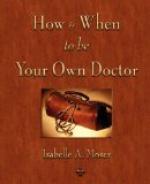Sometimes Organic cereal can be far worse than conventional. To make a cereal Organic is a negative definition; if it hasn’t had chemicals, then its Organic. Grain is one of the few foods that will still produce economic yields of low quality seed on extremely infertile soil or when half-smothered in weeds because herbicides weren’t used for reasons of ideological purity. Vegetables will hardly produce anything under those conditions; carelessly grown fruits and vegetables are inevitably small, misshapen, unmarketable. But seed cleaning equipment can remove the contamination of weed seeds in cereal grains (at a cost.)
The price the farmer receives for Organic cereal grain is much higher, so it is possible to accept rather low yields or expend more money for cleaning out high levels of weed seeds from the field-run harvest, and still make a good profit. A lousy Organic cereal crop like this might even make a higher profit because the farmer has been spared the expense of fertilization, of rotation, of weed control. I remember once I bought a sack of Organic whole oats that were the smallest, most shriveled, bitterest oats I’ve ever tried to eat. We ended up throwing out that tiny, light (lacking density) seed in favor of using the “conventional” whole oats that were plump, heavy and sweet.
Wheat is not the only cereal that is damaged by industrial milling. So are oats. Most consumers have never seen whole oats; they look very much like wheat berries. But rolled oats become rancid and stale on the shelf much like wheat flour on the shelf.
Another pitfall about using whole grains is that to be nutritious they must still be fresh enough to sprout vigorously. A seed is a package of food surrounding an embryo. The living embryo is waiting for the right conditions (temperature and moisture) to begin sprouting. Sprouting means the embryo begins eating up stored food and making a plant out of it. All foods are damaged by exposure to oxygen, so to protect the embryo’s food supply, the seed is surrounded by a virtually airtight seed coat that permits only enough oxygen to enter for the embryo’s respiration (yes, seed breaths slowly). Often the embryo is located at the edge of the seed and has its own air intake port. When the seed coat is removed or damaged, the innards are exposed to air and begin deteriorating rapidly. In the case of oats, especially rapidly, because oats are the only grass-based cereal that contains large quantities of oil—five percent oil, more or less. That’s why oats “stick to your ribs.” Rolled oats become stale and lose their flavor (and nutritional content) and perhaps become rancid very rapidly. So we make porridge from whole oat groats that we coarsely grind to grits (steel-cut oats) in an electric seed/spice mill just before cooking.




